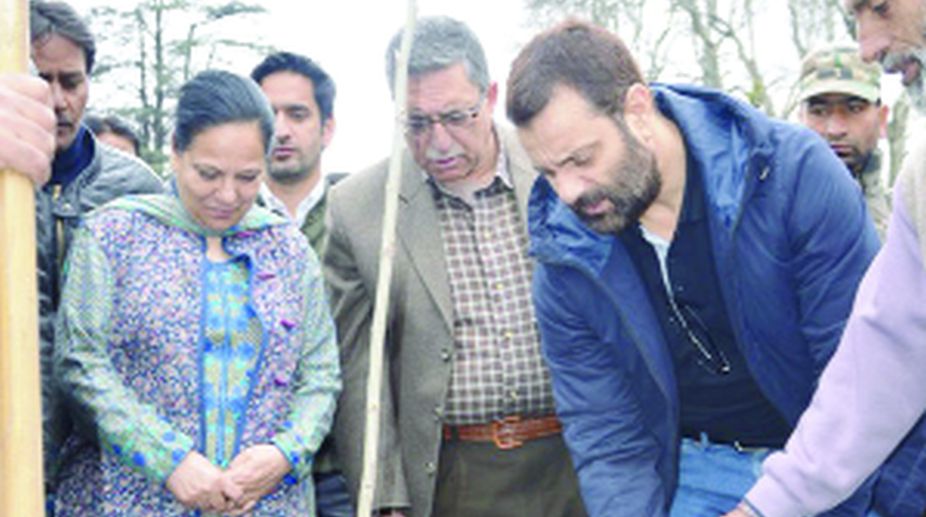Two back-to-back earthquakes jolt Kashmir Valley
Two back-to-back earthquakes measuring 4.9 and 4.8 on the Richter scale occurred in the Kashmir Valley on Tuesday.

In a bid to save the majestic Chinar from extinction, the Jammu and Kashmir government has launched a drive to plant 10,000 saplings during the current season in the Kashmir valley. Chinar is identified with Kashmir but its existence was threatened due to axing of several trees by unscrupulous elements.
A valley-wide campaign to save Chinar trees was launched on Thursday with wide-scale plantation of saplings. The Chinar is a symbol of the famed heritage of Kashmir.
Advertisement
At Srinagar, Minister for Floriculture Javaid Mustafa Mir, kick-started the drive by planting a Chinar sapling in the Emporium Garden. He said that there is a need to plant more trees in order to create an eco-friendly environment. He said preservation of Chinar trees must be the duty of every conscientious Kashmiri and by planting more trees, “we are doing some good for the future generations”.
Advertisement
Later, the Minister also released a booklet on Chinar trees “The Majestic Chinar of Kashmir” which has been published by the Department of Floriculture.
The department has supplied 250 Chinar saplings for being planted in schools and government offices in the Bandipora district where only 1491 Chinars were counted during a census conducted by the department last year.
At Baramulla, the drive was initiated by Deputy Commissioner Nasir Ahmad Naqash who said it has been launched with the purpose to revive Chinar plantations in the district.
The plantation drive was simultaneously started in all 10 districts in the valley. The Floriculture Department will plant 350 saplings in Handwara while 1250 Chinar saplings are being planted across the district as a part of the drive.
Meanwhile, the Scientific Advisory Committee (SAC) of J&K Lakes and Waterways Development Authority (LAWDA) on the preservation of Dal and Nigeen lakes met at Srinagar last week.
Threadbare discussions were held on various aspects of conservation of Dal lake like de-weeding and uprooting of lily pads, occurrence and infestation of Azolla, algal bloom, water analysis, vegetation mapping, assessment of pesticides and conversion of de-weeded material, vision document, monitoring of pesticide residues, biodiversity and conversion of Dal weed into compost.
Prominent lawyer Zaffar Shah stressed on the need to create mass awareness to preserve Dal and Nigeen lakes for the future generation.
A special drive for removal of lily pads, both manually and mechanically, was started in August 2017 and so far one sq km area has been cleared.
Measures are being taken to save native fish species in the lake that are being carved out in a result-oriented manner so that the pristine glory of Dal and Nigeen lakes is restored.
Later, ecologists from International Institute of Sustainable Development, Switzerland, Laurin Wuewnenberg and George Pallaske made a power-point presentation about conservation of Dal and Nigeen lakes on scientific lines.
Advertisement